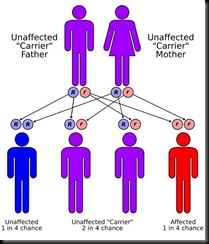On 8th May Thalassemias Day is celebrated to make people aware about silent inherited disease which affecting younger population. There are around 30 crore carriers in India and every year 10,000 children with thalassemia major are born in India , which constitutes 10% of the total number in the world. It is common in Sindhis, Punjabis, Gujaratis, Lohana etc.
Thalassemias are inherited blood disorders. "Inherited" means they're passed on from parents to children through genes. Thalassemias cause the body to make fewer healthy red blood cells and less hemoglobin than normal.
Hemoglobin contains a large amount of iron. When red blood cells are broken down, most of the iron from the hemoglobin is used again to make new hemoglobin. In the case of thalassemia the hemoglobin is fragile and breaks down sooner than normal, thus leaving the person with not enough hemoglobin in their body. This lack of hemoglobin causes anemia.
Different Types of Thalassemia
- Alpha (a) Thalassemia: Alpha thalassemia results in an excess of beta globins, which leads to the formation of beta globin aggregates called hemoglobin H. These aggregates are more stable and soluble, but under special circumstances can lead to hemolysis, generally shortening the life span of the red cell.
- Beta (b) Thalassemia: Beta thalassemia is a thalassemia in which there is a decreased production of beta globin chains. The excess alpha chains aggregate and the degree to which these chains aggregate determines their severity.
Causes :
Thalassemia is an inherited disease, which means it is passed on from parents to their child through their genes. It is an autosomal recessive trait, it is not linked by sex chromosomes. It is not infectious and cannot be “Caught” like a cold. It will not develop later in life, nor can a child outgrow it. Both parents must have thalassemia trait in order to pass the disease on to their child, but it only takes one parent to pass trait on to his/her child. Thalassemia trait will never develop into disease. Thalassemia trait can be passed on for many generations without being detected before a child is born with disease.
Symptoms:
People with thalassemia major may experience the following:
- Paleness
- Headaches
- Fatigue
- Shortness of breath
- Jaundice
- Spleen enlargement
Diagnosis:
The diagnosis of thalassemia trait and thalassemia major is made from microscopic examination of the blood, which shows many small, pale red blood cells, and from other blood tests that show reduced levels of adult hemoglobin in the blood. Diagnosis is confirmed by doing Hemoglobin electrophoresis on a sample of blood. The deficient synthesis of the hemoglobin are demonstrated by this test. In addition if the patient has hemolysis or breakdown of red blood cells there will be increased levels of bilirubin and fragmented cells on the peripheral blood smear for hemolysis.
Treatment:
Normally, there are no treatments recommended. However, the doctor may suggest taking iron medication if they feel it is necessary.
The primary treatment is regular blood transfusions, usually every four weeks. In addition to the blood transfusions, doctors recommend injections of Deferral to help the body flush out the extra iron created by the new blood. The injections are given under the skin from a small pump 5 to 7 nights a week.
Additionally, splenectomy (removal of the spleen), bone marrow transplants and chelation therapy are being researched as possible treatments for thalassemia.


No comments:
Post a Comment